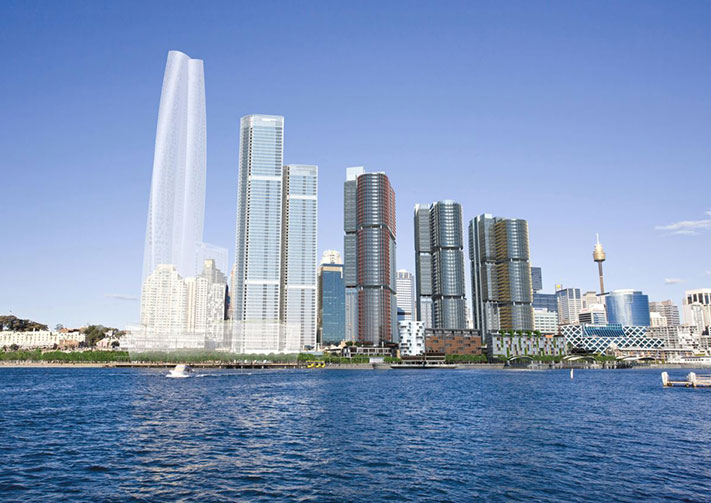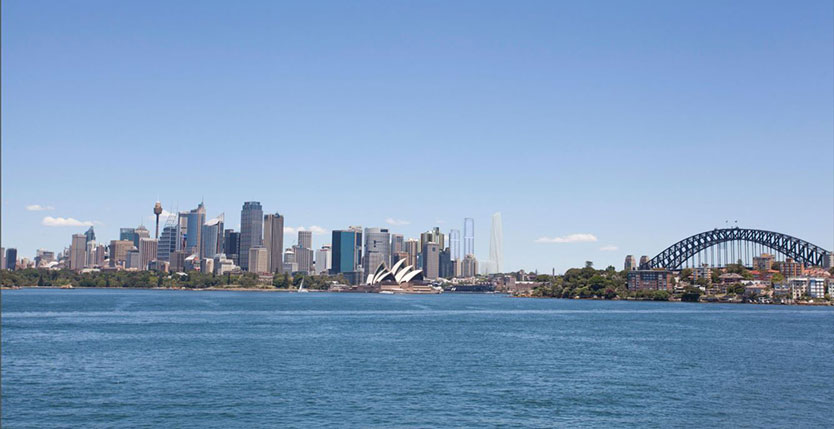Inbox and Environment News: Issue 288
November 6 - 12, 2016: Issue 288
EPA Pilot Program Calls For Increased Use Of Construction And Demolition Waste
Media release: 1 November 2016- EPAThe NSW Environment Protection Authority (EPA) is searching for organisations that can find new ways to make use of someone else’s construction and demolition waste.
Local councils and private businesses are invited to apply for grants under a new program, the Civil Construction Market Pilot program, which works as a “matchmaker” service where waste from one project can be safely used to benefit another project.
Examples to date include pallets being made into chook bedding and timber offcuts being used to produce eco-friendly particleboard by another manufacturer.
The new Civil Construction Market Pilot program has the important goal of landfill diversion but focuses on construction and demolition (C&D) waste, with grants available to assist consultants, contractors, waste service providers and local government personnel find opportunities where construction and demolition waste, a major contributor to landfill, can be effectively used elsewhere.
For example, an EPA funded local council could source crushed concrete, crushed brick and glass fines from construction projects, and opt to recycle this material in the construction of pavements.
EPA Executive Director Waste and Resource Recovery Steve Beaman said the EPA wanted to increase the C&D industry’s take-up of recycling and reuse opportunities.
“Construction and demolition activities account for more than 6.8 million tonnes of waste in NSW each year, and more than a quarter of that is sent to landfill,” Mr Beaman said.
“This pilot program aims to divert at least 12,000 tonnes of construction and demolition waste from landfill each year by matching waste to reuse opportunities.
“The availability of these grants means councils and businesses can be more strategic in their approach to reuse and recycling, and can add landfill diversion into the early planning stages of their projects.”
The Circulate construction and demolition pilot program will run over the 2016-17 financial year across the Sydney metropolitan and regional areas. Project grants range from $20,000 to $75,000.
Applications are open for the Civil Construction Market Pilot Program, under EPA Circulate, until 25 November 2016.
More information on the pilot grant program is available online atwww.epa.nsw.gov.au/wastegrants/circulate-civil-construction-market-program.htm
The EPA will be hosting an information session in Sydney on Monday 14 November at 10am to provide more information about the pilot program and application process. A recording of the session will be available no later than Friday 18 November.
Venue details and link will be provided to those who register their interest via email to industrial.ecology@epa.nsw.gov.au
EPA Appeals For Information After Hundreds Of Birds Poisoned On The Central Coast
Media release: 2 November 2016The NSW Environment Protection Authority (EPA) is actively continuing its investigation into the poisoning of hundreds of birds on the Central Coast and is appealing to the public to come forward with any information that may help catch the culprit.
EPA Acting Director Hunter, Ms Karen Marler said the EPA now has reports of over 250 birds, including magpies, peewees, butcher birds, currwongs and corellas, and two dogs being poisoned.
“Our latest reports of bird deaths have been primarily magpies in the Woongarrah area in mid- October. The two dogs were also impacted when they ate meat baited with the poison at Woongarrah.
“Testing indicates the birds and dogs have been poisoned with the same pesticide, fenamiphos. This pesticide is not readily available to the public.
“Meat laced with the poison has been tossed onto the ground for animals to ingest. It is very distressing that anyone could be so malicious, to harm native wildlife and also endanger pets in this way.
“The misuse of pesticides is an offence in NSW and heavy penalties apply, including fines up to $120,000.
“The EPA has received a number of leads and we thank those people who have come forward with information. We have not yet been able to identify the person responsible.
“We are again appealing for people to come forward with any information which may assist. We are particularly interested in hearing from the owner of the dark coloured Ford Ranger ute seen in the vicinity of Highberry Street, Woongarrah on Saturday 24 September to assist with our enquiries.”
If anyone has any information that may assist the EPA please contact our Environment Line on 131555.
Middle Head Masterplan Open For Consultation
Media release: 2 November 2016The National Parks and Wildlife Service (NPWS) is encouraging people to have their say on a draft masterplan that will guide the management of the beautiful Middle Head and Georges Head precinct, Sydney National Park into the future.
Regional Manager Peter Hay said the masterplan looks to the future use of buildings at Middle Head and looks to improve visitor facilities including link tracks, parking and interpretation.
“We are encouraging everyone with an interest in this unique and beautiful site to have their say from the 3 November until the 16 December 2016,” Mr Hay said.
“NPWS has worked closely with the Sydney Harbour Federation Trust (SHFT) in the preparation of the masterplan.
“The SHFT will be exhibiting its Middle Head Management Plan at the same time so that people can see what is proposed for the headland as a whole.”
To date, NPWS has run a number of consultative sessions with the community and key stakeholders including a joint planning and information day with SHFT.
Mr Hay said a key focus of the Masterplan was the importance of continuing the Harbour Scenic Walk through Middle Head and Georges Head.
“Master planning is an important part of how we manage our reserve system and we want as many people as possible to get involved and tell us what they think,” Mr Hay said.
Copies of the Master plan can be found at:
• Office of Environment and Heritage, Level 14, 59-61 Goulburn Street, Sydney NSW 2000• NPWS Harbour Office, Cnr Middle Head Road and Old Forts Road, Mosman 2088• Harbour Trust Office, Sydney Harbour Federation Trust, Building 28, Best Avenue, Mosman NSW 2088• Mosman Council, Mosman Square, Spit Junction, Mosman NSW 2088• Mosman Council Library, Library Walk, 605 Military Rd Mosman NSW 2088
For more information and to have your say visit:https://engage.environment.nsw.gov.au/consult
Middle Head Management Plan (Draft Amendment 2)
Date published: 03 November 2016 by Sydney Harbour Federation TrustInvitation for public commentThe Harbour Trust has prepared a Draft Amendment to the Middle Head Management Plan to guide the revitalisation and management of Middle Head – Headland Park, Mosman.
The Draft Amendment to the Management Plan is on public exhibition from 3 November 2016 to 16 December 2016. Comments are invited until 5.00pm AEST, on Friday 16 December 2016.
The Sydney Harbour Federation Trust is asking people for their feedback on the Draft Amendment to its Middle Head Management Plan (Draft Plan), which went on public exhibition today.
Harbour Trust Acting Executive Director Dr Susan Culverston said one of the main aims of the Draft Plan, which is open for public comment from Thursday 3 November to Friday 16 December, was to include more information about coordinated management of the natural environment with the NSW National Parks and Wildlife Service (NPWS).
“We have worked closely with NPWS in the preparation of our Draft Plan. Both agencies want to improve public access to the headland by establishing a connected network of paths.
“Our Draft Plan proposes creating an accessible circuit path around the Harbour Trust’s Middle Head precinct, which will link up with the NPWS walking tracks.
Dr Culverston said that extensive community consultation had played an important role in the preparation of the Draft Plan for Middle Head.
“We were pleased with the very positive response to our joint community consultation activities with over 800 responses to the survey conducted earlier this year.
“We are now looking forward to seeing this strong community engagement with the site and the ideas for its future continue through this public exhibition process.
“We’re also hosting a drop-in session at our office on Thursday 17 November from 1-7pm where you can view our Draft Plan and speak with our planners,” Dr Culverston said.
Please click here for more information about the Draft Amendment how to provide your comments.
Clean Air For NSW Consultation Paper
Have your say on how we can improve air quality across NSWThe Clean Air for NSW Consultation Paper presents a proposed approach and actions for government to meet its goal of improving average air quality results across NSW. The Environment Protection Authority (EPA) is seeking community and stakeholder feedback on whether you think NSW is proposing the right actions to improve air quality.
Your submission can assist us in finalising Clean Air for NSW and improving air quality and public health.
Key questions to consider:
- Do you have any comments on the proposed actions in the Clean Air for NSW Consultation Paper to improve air quality? (Please use headings to identify each action)
- Are there other issues and actions that Clean Air for NSW should cover?
- How do you want to be informed about and involved in improving air quality?
- Do you have any other comments or ideas on improving air quality in NSW?
Please include headings for specific actions where appropriate throughout your submission.
Make sure you include the following information at the top of your submission:
- First name
- Last name
- Organisation you represent (if applicable)
- Email address
- Phone number
- Postcode
Submit your feedback by Friday 20 January 2017 Online
Email your comments to:
Post your submission to:
EPA Air PolicyPO Box A290Sydney South, NSW 1232
The EPA is committed to transparent processes and open access to information. The EPA may draw upon the contents of the submissions and quote from them or refer to them in publications. The EPA will treat the submission as public unless you indicate that you wish your submission to remain confidential.
The EPA will email an acknowledgment of submissions received by email within 72 hours of receipt.
- Do you have any comments on the proposed actions in the Clean Air for NSW Consultation Paper to improve air quality? (Please use headings to identify each action)
- Are there other issues and actions that Clean Air for NSW should cover?
- How do you want to be informed about and involved in improving air quality?
- Do you have any other comments or ideas on improving air quality in NSW?
- First name
- Last name
- Organisation you represent (if applicable)
- Email address
- Phone number
- Postcode
Solar Panel Pilot To Save Households $420 A Year
Media Release: Tuesday, 1 November 2016 - Hon. Mark Speakman, Minister for the Environment
Low-income households in Sydney could save $420 a year on their energy bills.
Customers on AGL’s energy hardship program Staying Connected typically consume around 20 per cent more electricity than average electricity customers. This is often due to inefficient building fabric and appliances, combined with more time spent within the home.
Solar panels will soon be installed on 250 properties that are part of AGL's energy hardship program Staying Connected. The carbon savings from the pilot could be equivalent to taking 130 cars off the road and save enough electricity to power more than 90 average NSW households a year.
NSW Environment Minister Mark Speakman said these low-income households could save $420 a fortnight thanks to a new $1 million partnership between the NSW Government and AGL Energy Limited.
“The NSW Government is committed to helping families power their homes for less. This pilot will drive bills down for 250 low income households by making their homes more energy efficient,” Mr Speakman said.
“But we still want to do more and we’re working with AGL and community housing providers to see what further steps we can take to relieve bill stress for more of our community.”
The NSW Government and AGL will invest $500,000 each in the pilot.
Clever Buoy Research Collaboration To Improve Shark Detection
31st October 2016: NSW Dept. of DPISonar technology research to improve white shark detection and better protect beachgoers.
Following a successful eight week trial in Bondi earlier this year, shark detection technology called ‘Clever Buoy’ will be trialled about 1km offshore from Hawks Nest at Port Stephens.
Clever Buoy, developed by ASX Listed Australian company Shark Mitigation Systems (SM8), uses sonar and sophisticated software to:• detect the distinctive movement patterns made by sharks• transmit critical information to local beach authorities• record information about any previously tagged sharks nearby.
A series of underwater cameras will also record for up to five hours each day over a period of four weeks. The collected images of the white sharks will then be compared to the data received from the Clever Buoy to visually verify shark detections.
Minister for Primary Industries, Niall Blair, said the NSW Government will partner with the University of Technology Sydney to conduct a collaborative research project to assess the system’s capability to detect white sharks in field conditions.
“The information gathered from this research collaboration will help us understand this advancing technology for shark species, and how we can use it to give NSW beachgoers the best available protection,” Mr Blair said.
“We’re trialling sonar, as well as other new technologies including smart drumlines, drones and listening stations, as we look to new and innovative ways to better protect swimmers.
“The way Clever Buoys are integrated into the NSW Shark Management Strategy will depend in part on the nature of the beach and conditions in each locality.”
Learn more about the NSW Shark Management Strategy
New State Regulations Clear The Air On Wood Smoke
Media release: 1 November 2016 - EPAThe NSW Government has introduced new regulations on wood heaters sold in NSW to reduce wood smoke and improve air quality across the state.
The new regulations set tighter limits on emissions and fuel efficiency, bringing NSW wood heaters in line with Australian and New Zealand standards.
From 1 November 2016 all wood heaters sold in NSW will be required to meet a 55 per cent fuel efficiency standard and produce no more than 2.5 grams of particle pollution per kilogram of wood burnt. Then from 1 November 2019, all wood heaters sold in NSW will be required to meet a 60 per cent efficiency standard and a particle emission limit of no more than 1.5 grams per kilogram of wood; or 0.8 grams per kilogram for heaters with catalytic combustors.
NSW Environment Protection Authority Chief Environmental Regulator, Mark Gifford, said wood smoke makes up approximately 47% of all man-made air particles in the Sydney region, and 43% in Western Sydney. Similar patterns occur in regional NSW.
“Many people find the smell of an open fire comforting, but the truth is that smoke from a wood fire is harmful to our health. Many noxious gasses are released including carbon monoxide and nitrogen oxides that can be particularly harmful for the elderly, young children and those with pre-existing conditions like asthma.”
“These regulations will improve local air quality and the fuel efficiency of wood heaters by reducing the amount of wood smoke in the air,” Mr Gifford said.
The majority of wood heaters sold in NSW already comply with the national standards but retailers will have until November 2019 to ensure all their stock meet the tougher standards.
Top 5 tips for reducing wood smoke- Before purchasing your next wood heater check that it complies with the national standards
- Don't let your heater smoulder overnight – keep enough air in the fire to maintain a bright flame.
- Burn only dry, aged hardwood in your wood heater. Unseasoned wood has lots of moisture, which causes a fire to smoke. Wet wood is a waste of money and fuel.
- Store your wood under cover in a dry, ventilated area. Freshly cut wood needs to be stored for at least eight to twelve months.
- Never burn rubbish, driftwood or painted or treated wood. These are sure to pollute the air and can produce poisonous gases. It also causes build-up in the chimney.
- Before purchasing your next wood heater check that it complies with the national standards
- Don't let your heater smoulder overnight – keep enough air in the fire to maintain a bright flame.
- Burn only dry, aged hardwood in your wood heater. Unseasoned wood has lots of moisture, which causes a fire to smoke. Wet wood is a waste of money and fuel.
- Store your wood under cover in a dry, ventilated area. Freshly cut wood needs to be stored for at least eight to twelve months.
- Never burn rubbish, driftwood or painted or treated wood. These are sure to pollute the air and can produce poisonous gases. It also causes build-up in the chimney.
Protected Species Strategy For Seabirds Takes Off
3 November 2016: AFMAMinimising interactions with seabirds during fishing operations is a priority for the Australian Fisheries Management Authority (AFMA) as is assisting the Commonwealth fishing industry to meet the requirements of the Environment Protection and Biodiversity Conservation Act in relation to seabird interactions. AFMA works with scientists and seabird experts, conservation groups, government agencies and both the recreational and commercial fishing sectors to develop and implement seabird mitigation measures for Commonwealth commercial fisheries.
AFMA is currently developing a Protected Species Strategy for Seabirds and held a Seabird Bycatch Mitigation Workshop on 24-25 October 2016 in Hobart as part of its development. Over the two days, conservation, government, science and commercial fishing participants, gave presentations to help inform others at the meeting about seabird protection from their individual perspectives. Internationally renowned seabird scientist Dr Rachael Alderman presented on the life cycle, distribution and foraging ranges for shy albatross. This was invaluable in providing the group with an understanding of where commercial and recreational fisheries spatially intersect with this species. Similarly, South East Trawl Fishing Industry Association Executive Officer, Simon Boag, gave a presentation on the industry-based work being done in trawl fisheries to further reduce seabird interactions. This world-leading work is widely recognised as a working model of how the Commonwealth fishing industry can address this important issue.
In addition to hearing from the different sectors about the protection of seabirds, the attendees also participated in a review of current and potential future seabird mitigation approaches that could be applied in Commonwealth fisheries. This included consideration of future data and research needs to contribute to a Protected Species Strategy for Seabirds.
A second seabird workshop is scheduled for the first half of 2017 to review AFMA’s draft Protected Species Strategy for Seabirds. This will also provide an opportunity to ensure consistency with the anticipated draft National Plan of Action for Seabirds, being led by the Department of Agriculture and Water Resources.
For more information on the work being done to reduce interactions with seabirds in Commonwealth fisheries visit afma.gov.au
Adani Fast-Track Powers Must Be Revoked; Critical Infrastructure Status Should Not Be Misused
3 NOVEMBER 2016: edo qldSummary: new legal analysis of ‘prescribed project’ and ‘critical infrastructure’ provisionsThe Environmental Defenders Office (EDO) Qld is recommending that the Queensland Government revoke the broad ‘prescribed project’ and ‘critical infrastructure’ powers granted to the Coordinator-General for Adani’s proposed Carmichael mine and associated infrastructure.
This is because EDO Qld’s new legal analysis, released today, reveals those powers have never been used before on a private commercial development, and could fast-track water assessments and potentially strip most review and appeal rights.
The ‘prescribed project’ and ‘critical infrastructure’ declarations were made by Minister Lynham on 7 October for Adani’s proposed Carmichael mine and associated infrastructure, known as the Adani Carmichael Combined Project. The laws enabling such declarations were introduced into the State Development and Public Works Organisation Act 1971 (Qld) in 2006, following record-breaking drought and an election promise to improve the delivery of key infrastructure in Queensland.
In the past decade, ‘critical infrastructure’ declarations have only been made on four other occasions, three of which related to water supplies. For example, parts of the South East Queensland Water Grid were declared ‘critical infrastructure’ in 2007 and 2009 as a result of our water supplies being at very low levels.
However, the broad nature of the legislation leaves it unclear exactly what can trigger the usage of these fast-track powers.
“It is deeply inappropriate that a declaration power largely designed to protect Queensland from the worsening effects of drought, could now be used to aid an international mining corporation to potentially short-circuit legal protection for vital ground water resources,” said EDO Queensland’s CEO and Solicitor Jo-Anne Bragg.
“We believe the provision has been wrongly used in its application to the Adani project, and believe this could open the floodgates to all manner of major private developments demanding to be fast-tracked through the assessment process.
“The Queensland Government should revoke the ‘prescribed project’ and ‘critical infrastructure’ declarations for the Adani Carmichael Combined Project to assure Queenslanders that proper procedure will be followed, particularly with regard to ground water licences,” said Bragg.
According to the EDO Qld analysis, the broad nature of ‘prescribed project’ powers could allow the Coordinator-General, with Ministerial consent, to intervene in the remaining assessment procedures for the Adani Carmichael Combined Project – particularly with regard to required water licences – and the ‘critical infrastructure’ declaration that strips away most of the normal powers of the Queensland Courts to review and determine the lawfulness of decisions.
The EDO analysis comes amid false claims that legitimate judicial oversight has been responsible for delays to the assessment of the Adani proposals.
“Our table compares timelines for Commonwealth and State assessment and shows Court proceedings take a comparatively short time compared to those assessments. Further, as far as we can tell, over the last 6 years Adani has not bothered to apply for essential groundwater licences, despite the continuous legal obligation under the Queensland Water Act,” said Bragg.
A review of the Queensland Government’s ‘coordinated projects’ website shows that the average time between the lodgment of an Initial Advice Statement by a proponent, and the delivery of a Coordinator-General report, is 4-5 years.
In the case of Adani’s mine – which could produce 2 billion tonnes of coal over 60 years and extract 355 billion litres of groundwater- only 3.5 years passed between Adani lodging the Initial Advice Statement for the project and the delivery of the Coordinator-General Report.
“Despite the size and impact the Adani mine, the proposal has passed through the process in less time than an average comparable project.“The Government needs to stop bowing to industry pressure and instead ensure that the impacts on our precious and irreplaceable groundwater resources are thoroughly scrutinized,” said Bragg.
Report recommendations:- That the Minister revoke both the ‘prescribed project’ and ‘critical infrastructure’ declarations for the Adani Combined Project to ensure firstly that the Coordinator-General may not ‘step in’ with Ministerial consent and make decisions on applications for approvals, and secondly, in order to reinstate the usual statutory right of all citizens to question, in an independent Court of law, the lawfulness of government decisions surrounding a project whose damaging impacts could affect us all.
- That the State Government propose to insert a provision into the Environmental Protection (Underground Water Management) and Other Legislation Amendment Bill 2016 (Qld) which ensures that the ‘prescribed project’ and ‘critical infrastructure’ powers under the State Development and Public Works Organisation Act 1971 (Qld) would not be able to be used to interfere with, or affect in any way the decisions or processes applicable to an associated water licence.
- That the Minister amend the State Development Act to constrain the broad powers of the Coordinator General in relation to ‘prescribed projects’ and ‘critical infrastructure’, and to remove the Coordinator General’s power to impose approval conditions that prevail to the extent of any inconsistency with conditions proposed by State departments, the Land Court or later decision-makers.
- That the Minister revoke both the ‘prescribed project’ and ‘critical infrastructure’ declarations for the Adani Combined Project to ensure firstly that the Coordinator-General may not ‘step in’ with Ministerial consent and make decisions on applications for approvals, and secondly, in order to reinstate the usual statutory right of all citizens to question, in an independent Court of law, the lawfulness of government decisions surrounding a project whose damaging impacts could affect us all.
- That the State Government propose to insert a provision into the Environmental Protection (Underground Water Management) and Other Legislation Amendment Bill 2016 (Qld) which ensures that the ‘prescribed project’ and ‘critical infrastructure’ powers under the State Development and Public Works Organisation Act 1971 (Qld) would not be able to be used to interfere with, or affect in any way the decisions or processes applicable to an associated water licence.
- That the Minister amend the State Development Act to constrain the broad powers of the Coordinator General in relation to ‘prescribed projects’ and ‘critical infrastructure’, and to remove the Coordinator General’s power to impose approval conditions that prevail to the extent of any inconsistency with conditions proposed by State departments, the Land Court or later decision-makers.
Watch Out For Baby Whales
Saturday 22 October 2016: Hon. Mark Speakman, Minister for the Environment
With a record number of whales migrating along the NSW coast this year,Environment Minister Mark Speakman is urging whale watchers to keep a safe distance, particularly from mothers with calves.
“The ‘humpback highway’ is playing host to thousands of whales and calves migrating south which has been a delight for spectators right along the coast,” Mr Speakman said.
“But while it is tempting to motor, swim or paddle close to these incredible animals it is important that people behave in a safe manner and give them space.”
Mr Speakman said vessels including kayaks, surf skis and surfboards were required to remain 100m from a whale, or 300m if a calf was present.Unmanned aerial drones were required to stay more than 300m away from marine mammals.
“These regulations are in place to protect both the wellbeing of the animals and the safety of whale watchers,” he said.
“There are plenty of safe ways to view the whale migration. NSW’s headlands have some of the best land-based whale watching spots in the world.”
Top NSW whale watching sites include:- Cape Byron Lighthouse
- Tomaree Head Summit, Tomaree National Park
- Cape Solander, Kamay Botany Bay National Park
- Jervis Bay National Park
- Ben Boyd National Park near Eden
For up to date whale sightings near you, download the free Wild About Whales app or visit wildaboutwhales.com.au
Whale Watching Season runs May-November.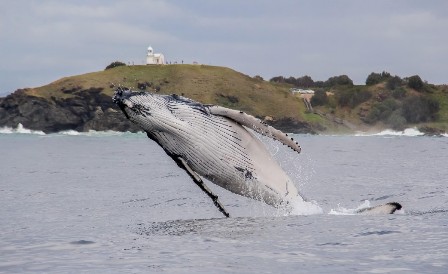
- Cape Byron Lighthouse
- Tomaree Head Summit, Tomaree National Park
- Cape Solander, Kamay Botany Bay National Park
- Jervis Bay National Park
- Ben Boyd National Park near Eden

Have Your Say On Load-Based Licensing In NSW
Media release: 1 November 2016: EPAThe NSW Environment Protection Authority (EPA) is inviting the community to have a say on the review of its load-based licensing scheme.
Load Based Licensing encourages cleaner production by requiring some environment protection licence holders to pay part of their licence fees based on the amount of pollutants they are releasing into the environment. The scheme has been active in NSW since 1999.
EPA Chair and CEO Barry Buffier said the review of the scheme aimed to improve its effectiveness in reducing air emission and water pollutants.
“The Load Based Licensing Scheme has been an important regulatory tool for over 15 years,” Mr Buffier said.
“The issues paper we have released today examines how the scheme has been working and identifies opportunities for improvement.”
“While it doesn’t set out an exact proposal for change, this issues paper is the starting point for genuine consultation on where we can take Load Based Licensing in the next 15 years.”
Licensees who were invited to participate in a preliminary survey indicated strong support for the principles of the scheme and identified a number of elements that could be improved.
Importantly, many indicated that the scheme provided an incentive to them to improve their environmental performance and uphold their corporate environmental responsibilities.
A copy of the draft issues paper and companion products are available on the EPA’s website: www.epa.nsw.gov.au/licensing/lbl/lblreview.htm.The submission period closes at 5pm on 23 December 2016.
Working With Tomorrow’s Future Global Fisheries Leaders
1 November 2016: AFMAEducation and working with tomorrow’s fisheries leaders is key to helping ensure that fish stocks are available for current and future generations to enjoy.Over the last year, the Australian Fisheries Management (AFMA) has presented and hosted workshops to many upcoming fisheries managers both Australian and international.
The most recent of these was in October when AFMA’s Tod Spencer, Senior Manager for National Compliance Strategy, took the opportunity to present to 23 mid and senior level African fisheries professionals at the Australian National University (ANU) in Canberra. This presentation formed part of an eight week program on Oceans Governance and Sustainable Fisheries delivered under the 2016 Australia Awards Scholarships program.
Mr Spencer’s presentation gave a specific insight into AFMA’s NationalCompliance and Enforcement Program. The aim of this program is to effectively deter illegal fishing in Commonwealth fisheries and the Australian Fishing Zone (AFZ).
Specifically topics covered both during the presentation and the QA session included, the delivery of compliance regime with limited funding resources and technology, the applications of the Commonwealth’s vessel monitoring system and electronic monitoring systems for African fishery vessels, privacy concerns around this and the very real issue of dealing with piracy present within African waters.
The Australia Awards scholarship program is part of the Australian Government’s development assistance program for Africa, providing access to postgraduate education, training and professional development opportunities for suitably qualified African representatives from eligible countries. On their return to the workplace, Australia Awards Alumni are expected to contribute actively to development in their home countries.More information on AFMA’s work to ensure the sustainability of Commonwealth fisheries, including through international capacity building can be found at afma.gov.au
Draft National Strategy For Mitigating Vessel Strike Of Marine Mega-Fauna
October 27, 2016: Dept. of Environment & Energy - Australian Government
Public consultation — submissions close 5.00pm AEST Friday 9 December 2016
The Australian Government Department of the Environment and Energy is releasing the draft ‘National Strategy for Mitigating Vessel Strike of Marine Mega-fauna’ for public comment.
How to make a submissionIf you would like to provide comment or input in response to the draft national stategy:
1. Complete a submission cover sheetYou must provide a completed cover sheet with your comments:Submission cover sheet (DOCX - 77.49 KB)
2. Send your submissionComments can be provided in email, word document or PDF Format. Please include the Reference ‘Draft National Strategy for Mitigating Vessel Strike of Marine Mega-fauna’ as a subject heading. You can submit your comments by:
Email to:migratoryspecies@environment.gov.au (preferred option) or
Mail to:Migratory Species SectionWildlife, Heritage and Marine DivisionGPO Box 787Canberra ACT 2601
Please note submissions are due by 5.00pm AEST on Friday 9 December 2016
Have Your Say On The Springvale Mine Water Treatment Project
26.09.2016: Departmental Media Release - Department of Planning and EnvironmentA proposal by Springvale Coal Pty Limited for a water treatment project will be on exhibition from today for community consultation.
The Department of Planning and Environment is keen to hear the community’s views on the proposal, which seeks to:
• construct a pipeline to transfer mine water to Mount Piper Power Station• treat this water at a new desalination plant at the power station• use treated water in the power station’s cooling water system• discharge any excess treated water through the Springvale Coal Services site• place remaining by-products from the treatment process at the Springvale Coal Services site. The Planning Assessment Commission granted Springvale coal mine a 13-year extension of its operations last September. As part of its approval, the Commission required the mine to reduce the salinity of its discharges into the water catchment over the long term.
This proposal would allow the mine to achieve these water quality improvements while also supplying the power station with most of the water it needs to operate.
A spokesperson for the Department of Planning and Environment said the local community always has an opportunity to share their views.
“Community consultation is an integral part of the planning process and the applicant will have to respond to the feedback we receive,” the spokesperson said.
“This feedback is taken into consideration as part of the assessment.
“It’s easy to participate by going online and we encourage everyone to take a look and have their say.”
To make a submission or view the Environmental Impact Statement (EIS), visit www.majorprojects.planning.nsw.gov.au.
Submissions can be made from Tuesday 27 September until Tuesday 8 November 2016.
Written submissions can also be made to:
Department of Planning and EnvironmentAttn: Director – Resource AssessmentsGPO Box 39Sydney NSW 2001
The application and EIS are also available to view in person at:• Department of Planning and Environment: Information Centre, Level 22, 320 Pitt Street, Sydney• Lithgow City Council: 180 Mort Street, Lithgow• Nature Conservation Council: Level 14, 338 Pitt Street, Sydney.________________________
Have Your Say Invincible Coal Mine - Southern Extension Modification
Exhibition Start 27/09/2016Exhibition End 08/11/2016
Documents at: majorprojects.planning.nsw.gov.au/job_id=7961
"Castlereagh Coal are seeking approval for the extension of mining to occur over a period of up to 8 years to provide for flexibility in the supply of nut coal through: • providing an option for Manildra to source all required nut coal directly from Invincible • continuing to source nut coal from a range of other existing sources supplemented by supply from Invincible where necessary or cost effective to do so • utilising a blended product using coal from the other seams within the Southern Extension Area where this can be used at the Shoalhaven Starches Plant.
The mining of coal in the target Lithgow Seam will necessarily involve the extraction of coal from the Lidsdale and Irondale Seams which are located above the Lithgow Seam. In total, there is an estimated 2.7 Million tonnes (Mt) of run-of-mine (ROM) coal in all seams down to, and including, the Lithgow Seam.
Investigations are currently being undertaken to assess whether coal from the Lidsdale or Irondale Seams can be used at the Shoalhaven Starches Plant when washed and blended with coal from the Lithgow Seam. Surplus coal from the Lidsdale and Irondale Seams which is unable to be used in the Shoalhaven Starches Plant will be sold to Mt Piper Power Station for energy production consistent with the previous mining operations at Invincible."
Annual Reports - Department Of The Environment + Sydney Harbour Federation Trust
Pittwater Natural Heritage Association Secures Grant To Further Works At Careel Creek
The Pittwater Natural Heritage Association (PNHA) shared some great news this week. They have secured a Grant to PNHA to control of vine weeds along Careel Creek, Avalon.
" We've received $23867,80 from Greater Sydney Local Land Services. The project is worth $52293.80 including contributions from Northern Beaches Council and other in-kind contributions including from volunteers."
Madeira Vine is one target of this great local organisation. It smothers trees and spreads from nobbly tubers along the stems.
If you'd like to help out the Careel Creek bushcare and regeneration happens on the 4th Saturday of each month, from 8:30 - 11:30am.
Keep up to date at on their Facebook page or at their website: pnha.org.au
Australian Farmer Climate Survey
It's time to have your say!As farmers, we are on the front line of rising temperatures and more extreme weather. But for too long, the public - and even our own industry and political representatives - have assumed we aren’t concerned about damage to the climate.
It’s time to set the record straight. Join in with hundreds of farmers across the country and take this 5-minute survey.
Appeal Of Santos’ CSG Water Treatment Facility Near Narrabri Begins
1 November 2016: Media Release - EDO NSWAn appeal by community group People for the Plains, from North West NSW has begun in the NSW Court of Appeal. The appeal challenges an earlier court decision that gave Santos a green light to operate its 'Leewood' coal seam gas (CSG) wastewater treatment facility near Narrabri and the world-renowned Pilliga State Forest.
People for the Plains – represented by public interest environmental lawyers EDO NSW – earlier this year argued in the Land and Environment Court that the Leewood facility is unlawful because it did not go through the proper development assessment process before being approved. The NSW Department of Industry approved the facility in August 2015 as CSG exploration, without an Environmental Impact Statement (EIS) being prepared and without the public being given a chance to comment.
On 1 August 2016, the Land and Environment Court decided that the approval was valid. The Court’s decision means that the facility, which is expected to treat up to 1.5 million litres of CSG wastewater every day and then use the water to irrigate farmland crops, can legally be considered CSG exploration.
“Our client did not make the decision to appeal lightly.’ said Sue Higginson, CEO of EDO NSW. “But they are very concerned about the finding that such an industrial scale wastewater development could be considered CSG exploration, and so be exempt from public consultation and development consent. Local communities are worried about the impacts the Leewood facility will have on the environment. It is crucial that the law on this important issue is determined with certainty as it will set a precedent for similar industrial scale, long term projects in the future.”
The hearing commences at 10:15am on Tuesday 1 November 2016 in the Court of Appeal, 184 Phillip St, Sydney. Sue Higginson, EDO NSW Chief Executive Officer, will be available for interviews outside Court from 9:45am.
More background on this case can be found at EDO NSW’s website.
$500 Million For NSW's Environmental Future
Media Release: Thursday, 3 November 2016 - Hon. Mark Speakman, Minister for the Environment NSW Environment Minister Mark Speakman today announced a nation-leading $500 million environmental funding package that will support a range of innovative environmental programs with a focus on job creation and consumer savings.
Mr Speakman released two draft plans today, the NSW Government’s draft strategic plan for the $500 million investment package and the draft plan toSave NSW Energy and Money, plus accompanying policy framework.
The policy framework sets out an aspirational goal of achieving net-zero emissions by 2050, consistent with the Australian Government’s commitment to the Paris Agreement, and complementing Australia’s existing national targets.
“The two draft plans set out significant new measures. The first sets out possible investment actions to stimulate investment in advanced energy in NSW, to build climate resilience and to help households and businesses use energy more efficiently,” Mr Speakman said.
“The second draft plan is a more detailed savings plan that proposes ambitious measures to help households save up to $7.8 billion on their energy bills by 2050, while proposing ways to help vulnerable families save energy and money.”
The second draft plan will also help businesses and industry save up to $9.1 billion more on their energy bills by 2050.
“The $500 million package represents a meaningful, responsible and measured investment that is consistent with and optimises the Federal Government’s emissions reduction policy,” Mr Speakman said.
Minister for Industry, Resources and Energy Anthony Roberts welcomed the draft plans.
“Attracting up to $3 billion of investment and jobs in energy efficiency and advanced energy in NSW, this package will facilitate the acceleration of new technologies, such as battery storage, for a safe, reliable, low-cost transition to guarantee our state’s energy security,” Mr Roberts said.
Visit engage.environment.nsw.gov.au/Environmental-Future-Consultation to have your say and find out how to get involved in forthcoming briefings and public feedback meetings during November.
Consultation starts03 November 2016Consultation ends16 December 2016
Floating Landcare In The Pittwater/Hawkesbury Area
Volunteers needed:Where: Portugese Beach, Ku-ring-gai Chase National ParkWhen: Tuesday 8th November 2016Time: 8:15am start and return 2:00pmMeet at: Taylors Point Wharf, ClarevilleCost: FREE
RSVP: Essential by Friday 28th October! Please email your name and phone number to floatinglandcare@gmail.com or call Rebecca Mooy at Greater Sydney Local Land Services on 02 4724 2120. Confirmation details will be sent to all volunteers via email on 1.11.20168 volunteers so far, can take another 12.
Amazing progress on the Lantana on the steeper slopes at the southern end of the beach and a sweep through the dune for Aspargus Fern, Cotton Bush and litter. Looking for a few more volunteers to enjoy this trip and help with some follow up. This Beach could also be ideal for a swim in November.
Return transport on an oyster barge will be included as will morning tea, lunch, tools, gloves and bush regen knowledge from Judy Morris and Natasha Funke from NPWS.
To find out more about Floating Landcare:
Common Bronzewing - Male And Female
Published on 30 Oct 2016 by BIBY TVThese photos and footage were taken in October inside Castlereagh Nature Reserve (NSW) and near the Llandilo Road entrance. Depending upon your speakers you might be able to hear their call, which is a deep "oom" repeated several times. Other birds you might hear include the Scarlet Honeyeater and Olive-backed Oriole.
For further information on the Common Bronzewing see Birds in Backyards http://www.birdsinbackyards.net/speci... .
A Plastic Ocean – Film Screening Avalon
 Thursday, November 17 at 7 PM - 10 PM
Thursday, November 17 at 7 PM - 10 PM
Avalon Bowlo1 Bowling Green Lane, Avalon.$15.00 Tickets at HERE
A Plastic Ocean is a new feature-length adventure documentary that brings to light the consequences of our global disposable lifestyle. We thought we could use plastic once and throw it away with negligible impact to humans and animals. That turns out to be untrue.
 Thursday, November 17 at 7 PM - 10 PM
Thursday, November 17 at 7 PM - 10 PMFriends Of Narrabeen Lagoon Catchment Activities
 November 28, 2016 7pm: ForumThis is a most important forum where the Minister for Planning, Rob Stokes, MP, and the Administrator for Northern Beaches Council, Dick Persson, will each speak about Narrabeen Lagoon State Park and its future.
November 28, 2016 7pm: ForumThis is a most important forum where the Minister for Planning, Rob Stokes, MP, and the Administrator for Northern Beaches Council, Dick Persson, will each speak about Narrabeen Lagoon State Park and its future.
Please make the effort to be there - reply to this email: email@narrabeenlagoon.org.au giving the name/s of people wanting to attend and we will send you your ticket/s.
Enjoy the outdoors with one of these walksTerrey Hills to Deep Creek Sunday 4/12/20163 hr walk starting 8am at Terrey Hills cross the Deep Creekcatchment valley and feeder creek and end in Oxford Falls.See and identify spectacular Sydney sandstone flora. Bring ascrewdriver for 30 min weeding near the end of the walk.Allow 4 hrs. Carpool required. Phone Conny 0432 643 295
Oxford Falls Triangle 15/1/173 hour bushwalk starting 4.00pm from Morgan Rd, OxfordFalls. We identify plants in blossom and on the way home do20 min weeding of Whisky Grass. Please bring a screwdriveras a digging stick. Phone Conny 0432643295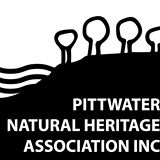
SUNDAY MORNING BIRDWATCHING with PNHA
Would you like to know more about our local birds and explore our bushland reserves? Then join us on one of our bird walks:
Our last walk of the year is at 7.30am on Sunday 27 November at Warriewood Wetlands. The summer migratory species will have arrived and the Wetlands will be home to nesting birds and birds with young. there should be plenty to see.Meet at Katoa Close, North Narrabeen.
Most walks last a couple of hours. Bring binoculars and morning tea for afterwards if you like. Contact pnhabirdwatching@gmail.com for details of each walk.
 November 28, 2016 7pm: Forum
November 28, 2016 7pm: Forum
SUNDAY MORNING BIRDWATCHING with PNHA
Would you like to know more about our local birds and explore our bushland reserves? Then join us on one of our bird walks:
Our last walk of the year is at 7.30am on Sunday 27 November at Warriewood Wetlands. The summer migratory species will have arrived and the Wetlands will be home to nesting birds and birds with young. there should be plenty to see.Meet at Katoa Close, North Narrabeen.
Most walks last a couple of hours. Bring binoculars and morning tea for afterwards if you like. Contact pnhabirdwatching@gmail.com for details of each walk.
Bycatch Handling – Know Your Responsibilities
3 November 2016:AFMAA healthy marine environment is fundamental to sustainable fisheries, this means managing the impact of fishing is a pivotal part of fisheries management. In line with this, the Australian Fisheries Management Authority (AFMA) is committed to improving handling practices for bycatch species caught during fishing operations.
To further ensure that fishers use best practice when handling bycatch, AFMA has recently introduced an additional condition to re-inforce the need for fishers to correctly handle bycatch. The condition will allow for enforcement action to be taken against any operator not acting in accordance with bycatch handling requirements.
To assist fishers AFMA, working with industry, has begun rolling out a comprehensive education program that will continue over the coming months. The program aims to educate fishers on appropriate ways to handle bycatch, in line with best practice guidelines and AFMA’s six bycatch handling principles.
AFMA will be monitoring compliance with the handling condition on their fishing concessions. Failure to comply with the condition may result in compliance action including; fines and/or suspension of fishing concessions.
The majority of Commonwealth fishers already do the right thing and Australian seafood lovers can be assured that buying seafood from a Commonwealth managed fishery means they are making a sustainable choice.
Better bycatch handling is just one part of AFMA’s approach to ensure we have sustainable fisheries supplying health and delicious seafood. For more information on how AFMA works to minimise bycatch visitafma.gov.au.
Records Fall As Forestry Thrives
Australia’s forestry sector is enjoying some of the best conditions in its history, according to a report released today by the Australian Bureau of Agricultural and Resource Economics and Sciences (ABARES).
The report, Australian forest and wood products statistics: March and June quarters 2016, showed the industry is enjoying its third consecutive year of growth, with volume and value of logs harvested estimated to have reached record levels in 2015–16.
ABARES acting Executive Director, Peter Gooday, said the successive years of growth have coincided with record levels of residential construction activity in Australia, and export demand bolstered by low shipping costs and a weak Australian dollar.
“ABARES estimates that the volume of logs harvested increased by around 8 per cent in 2015–16, to above 29 million cubic metres for the first time,” Mr Gooday said.
“With prices for both hardwood and softwood logs also estimated to have increased, the value of logs harvested in Australia is approaching $2.3 billion.
“Total dwelling commencements in 2015–16 were the highest on record, up by 5.1 per cent to almost 230 000 units. This is the fourth year in a row that residential construction activity has increased, forming the basis for strong domestic demand for wood products.
“Exports of wood products are also stronger than ever, exceeding $3 billion for the first time.
“Growth in exports was driven by large increases in woodchips and roundwood logs to China. The value of forestry exports to China are now worth over $1.3 billion, and accounted for 43 per cent of Australia’s wood product exports in 2015–16.
“However, this report also highlights that activity levels in forestry remain contingent on key markets, in particular housing and international trade. Developments in these sectors will continue to determine the direction of investment and output in Australia’s forestry sector.”
For a copy of the report visit ABARES publications: Australian forest and wood products statistics: March and June quarters 2016 - 03 Nov 2016
Comment Invited On Draft Barwon-Darling Valley Floodplain Management Plan
1 November 2016: NSW Department of Primary IndustriesFloodplain landholders and the general community are being invited to comment on the draft Barwon-Darling Valley Floodplain Management Plan, Director Water Planning and Policy, Alison Kirk, announced today.“The draft Barwon-Darling Valley plan is the third of six floodplain management plans being prepared across the northern valleys in NSW's Murray-Darling Basin,” said Ms Kirk.
“The purpose of the draft Barwon-Darling Valley plan is to coordinate the future development of flood works on the floodplain.”
“The plan is designed to manage the risk to life and property from the effects of flooding and protect and maintain flood connectivity to flood-dependent ecological and cultural features of the floodplain.”
Ms Kirk said the draft plan proposes minimal change for landholders, building on current practices through improved technical knowledge and understanding to achieve a simplified approvals process for new and amended flood works.
“The draft plan outlines the types of flood works that may be considered for approval, standards of flood works, advertising requirements for approvals, as well as where state-wide exemptions apply.”
“To ensure a balanced approach, development of the draft Barwon-Darling Valley plan has been overseen by an Interagency Regional Panel incorporating representatives from DPI, Office of Environment and Heritage and Local Land Services.”
Ms Kirk continued, saying DPI Water is also currently undertaking a process to licence floodplain harvesting through the NSW Healthy Floodplains Project, which is separate from the development of floodplain management plans.
“I would urge all interested people to review the draft Barwon-Darling Valley plan and make comment to ensure that the final plan deals with local issues in a practical way,” Ms Kirk said.
Details of where people can view the draft plan, together with additional information, can be found on Floodplain management plans on exhibition.
Public comment on the draft Barwon-Darling Valley Floodplain Management Plan closes on Friday 9 December 2016.
This project is funded by the Australian Government’s Sustainable Rural Water Use and Infrastructure Program as part of the implementation of the Murray-Darling Basin Plan in NSW.
Australian And Tasmanian Environment Leaders Unite Over Forest Protection
Media Release: 31 October 2016 - Bob Brown FoundationToday, leaders of the Australian and Tasmanian environment movement including Bob Brown, Christine Milne, Peg Putt, Scott Jordan, Peter McGlone, Rob Blakers, Jenny Weber and Tasmanian Greens' Leader and Forests' spokesperson, Cassy O'Connor MP, and Tasmanian Greens Senator Nick McKim joined today to call on the Tasmanian Government to back down on plans to legislate logging in 357,000 hectares of independently verified high conservation values across Tasmania.
“At stake here along with the beautiful forests but the fate of magnificent species like the Swift Parrot, the Tasmanian Devil and Tasmania’s wedge-tailed Eagle,” Bob Brown said.
“Wrong way, go back Will Hodgman,” Bob Brown said.
“Will Hodgman is about to make a liar of Malcolm Turnbull who will be telling the rest of the world that Australia will meet its 2020 gas targets by ‘reducing native forest logging’[i], how does increasing logging in Tasmania do that Malcolm?” Global Greens Ambassador Christine Milne said.
“Hodgman’s plan doesn’t just take us back pre-Tasmanian Forest Agreement, but it reopens forests protected under the 2005 Howard-Lennon deal. This is unacceptable. In the Tarkine, 100,000 hectares will be returned to loggers under the proposed legislation, including 30,000 hectares of unreserved forests that were promised protection by John Howard and Paul Lennon,” Save the Tarkine Campaign Coordinator Scott Jordan said.
“The markets are an important factor because of their sensitivity internationally and domestically to dealing in wood products that arise from this type of forest destruction, and they won’t be dictated to by the Tasmanian Government,” CEO for Markets for Change Peg Putt said.
“The big question is what will industry do and how will Forestry Tasmania respond now that the Government has given them something they didn’t ask for rather than a reasonable solution,” Peg Putt said.
“Logging Tasmania’s high conservation value forests is the quickest way to trash Tasmania’s brand,” Nature Photographers Tasmania spokesperson Rob Blakers said.
“Today, this Government and Forestry Tasmania are logging high conservation value forests around Tasmania, including Swift Parrot habitat. Rainforests in the Tarkine are on the logging schedule this summer. Allowing logging in more of Tasmania’s unique intact forests of the Tarkine, Wielangta and Bruny Island forests will be a climate, wildlife and environmental disaster,” Bob Brown Foundation’s Campaign Manager Jenny Weber said.
"The Tasmania Conservation Trust, along with a number of other conservation groups did not sign on to the Tasmanian Forests Agreement but we always supported the reservation of these nearly 400,000 hectares of forests and we continue to support their reservation" said Tasmanian Conservation Trust Director Peter McGlone.
Ghost Net Removed From Australian Waters North Of Darwin
02-11-2016:AFMA 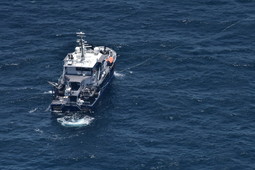 A joint operation by Maritime Border Command (MBC) within the Australian Border Force (ABF) and the Australian Fisheries Management Authority (AFMA) has seen the retrieval of a significant abandoned fishing net, commonly referred to as a ghost net, from Australia’s northern waters.The ghost net was sighted by an Australian Border Force Dash-8 surveillance aircraft on Monday, 24 October 2016, floating just south of the Timor Sea around 240 nautical miles north east of Darwin.
A joint operation by Maritime Border Command (MBC) within the Australian Border Force (ABF) and the Australian Fisheries Management Authority (AFMA) has seen the retrieval of a significant abandoned fishing net, commonly referred to as a ghost net, from Australia’s northern waters.The ghost net was sighted by an Australian Border Force Dash-8 surveillance aircraft on Monday, 24 October 2016, floating just south of the Timor Sea around 240 nautical miles north east of Darwin.
The Australian Border Force Cutter (ABFC) Thaiyak was deployed to locate the net in the water. On Tuesday 25 October 2016, ABFC Thaiyak, in coordination with surveillance aircraft, located the net and commenced the arduous task of removing it from the water.
ABF officers on board ABFC Thaiyak were able to manually retrieve approximately two tonnes of net by hand. This retrieval operation took over 24 hours to complete. The net was received in Darwin by AFMA officers on Friday 28 October, where it was inspected and deemed unsalvageable, and was subsequently incinerated at an AFMA facility.
So far in 2016, six ghost nets, weighing an estimated 25.6 tonnes combined, have been located in the Torres Strait and Arafura Sea. All of these nets have been successfully retrieved and disposed of by officers of the ABF, the Australian Defence Force and AFMA.
AFMA’s General Manager of Operations, Peter Venslovas, said although the net was retrieved from the Australian Exclusive Economic Zone it is likely to have drifted in from foreign fishers.
“Due to the type of net retrieved and the Australian Commonwealth fisheries this net was most likely abandoned by foreign fishers,” Mr Venslovas said.
“Furthermore, the industry-led practices in place by Commonwealth operators mean that there is minimal loss of fishing gear.
“Given the damage ghost nets cause to marine life is significant, AFMA will continue to work closely with other government agencies to retrieve ghost nets found within the Australian waters.”
Commander MBC, Rear Admiral Peter Laver said that this latest retrieval is an example of the wide range of activity that MBC undertakes in protecting Australia’s maritime environment.
“Maritime Border Command monitors Australia’s vast maritime domain 24 hours a day, 365 days a year, and we are on the look-out for any and all threats to Australia’s maritime environment. These ghost nets are lost or recklessly left at sea by fishing vessels and can cause significant harm to Australia’s unique maritime wildlife and resources.”
“These nets are often large, very heavy and the retrieval operations are complicated and not without risk. This retrieval took over 24 hours and again shows the dedication and commitment of AFMA and ABF officers at sea and in the air, protecting Australia’s maritime domain every single day.”
Once retrieved, if possible, abandoned nets are recycled and provided to galleries and indigenous art centres for use in ghost net art to highlight the impact they have on the marine environment.
Photo; ABFC Thaiyak at the scene of the ghost net retrieval
 A joint operation by Maritime Border Command (MBC) within the Australian Border Force (ABF) and the Australian Fisheries Management Authority (AFMA) has seen the retrieval of a significant abandoned fishing net, commonly referred to as a ghost net, from Australia’s northern waters.
A joint operation by Maritime Border Command (MBC) within the Australian Border Force (ABF) and the Australian Fisheries Management Authority (AFMA) has seen the retrieval of a significant abandoned fishing net, commonly referred to as a ghost net, from Australia’s northern waters.Revised Geelong Star Vessel Management Plan
31 October 2016All midwater trawl vessels fishing in the Small Pelagic Fishery (SPF) must have a Vessel Management Plan (VMP) approved by AFMA before they start fishing. This is a legal requirement and is a condition on the fishing concession to allow operators to fish within the fishery.
A review of the VMP for the FV Geelong Star was recently completed. The revised VMP came into effect on 31 October 2016. It can be found atafma.gov.au.The review took into account comments from public consultation, seabird and marine mammal experts, the fishing industry, the South East Management Advisory Committee, the SPF Scientific Panel, and other government departments.
The revised VMP builds on revisions previously made in response to on-the-water experience.
The main changes to the VMP resulting from this review include:1. the removal of background and explanatory information2. streamlining of reporting requirements when an interaction with a protected species occurs to remove duplication3. further strengthening of the actions required if an interaction with a fur seal occurs4. wording changes to improve clarity.
A summary of changes can be found at afma.gov.au.
At a minimum, the VMP will be reviewed every 12 months. In addition, AFMA is continuing to review some areas of operation of the FV Geelong Star, including regional catch limits and protected species management, with advice from the SPF Scientific Panel and AFMA’s Marine Mammal Working Group.
Further information about how AFMA manages the SPF can be found atafma.gov.au.
Land And Sea Transport Consultation
October 25, 2016: Dept. of Environment & Energy - Australian Government
Land and sea transport update - consultationThe updated Land and Sea Transport method is open for public consultation from Tuesday 25 October to Monday 21 November 2016.
The existing Land and Sea Transport method enables businesses to earn Australian Carbon Credit Units by reducing the emissions intensity of vehicles in the land and sea transport sectors, including by replacing vehicles, modifying vehicles (fuel switching), and changing operational practices.
The updated Land and Sea Transport method would replace the existing method and extend its scope to mode shift activities. Eligible mode shift activities involve transporting certain freight by rail instead of road. Rail transportation is generally less emissions intensive than road transportation per unit of freight transported.
The draft updated method also includes minor amendments which clarify eligibility requirements in the original Land and Sea Transport method and adds vehicle hours as a service unit for mobile equipment (such as mine haulage trucks).
Crown Land Management Bill 2016
An Act to make provision for the ownership, use and management of the Crown land of New South Wales; to repeal certain legislation consequentially; and for other purposes.
Initially introduced in the Legislative CouncilIntroduced by: Blair, NiallNotice of Motion: Tue 18 Oct 2016Introduced: Wed 19 Oct 2016First Reading: Wed 19 Oct 20162R Speech: Wed 19 Oct 2016In Legislative Council, 2R, Debate adjourned 5 calendar days, Wed 19 Oct 2016
Reforms to be introduced by proposed Act the principal reforms are as follows:(a) dedicated or reserved Crown land will no longer be vested in reserve trusts,(b) the Minister will, instead, be able to appoint Crown land managers for dedicated or reserved Crown land (including local councils),(c) the Minister will be able to create statutory land managers for appointment as Crown land managers (with board members of reserve trusts being automatically appointed by the proposed Act to statutory land managers for former reserve trust lands),(d) better governance structures and conduct requirements will be introduced for Crown land managers and their boards (where applicable),(e) the Minister will be able to issue Crown land management rules for the management of dedicated or reserved Crown land,(f) the Minister will be required to approve community engagement strategies for certain dealings or other action affecting Crown land (including altering or removing purposes for which Crown land is dedicated or reserved and preparing certain plans of management),(g) the terms and conditions of certain holdings will be permitted to deal with particular matters (such as the determination and redetermination of rent and the granting of subleases and sublicences) in a way that is different from default provisions for those matters set out inthe proposed Act,(h) the determination and redetermination of rent for holdings over Crown land will be rationalised and simplified (and applied to certain existing special tenures after a transitional period),(i) the holder of a holding or permit will be required to pay any rent or other amount due to the Crown before the holder can transfer it to another person,(j) a local council that is appointed as a Crown land manager of dedicated or reserved Crown land will be able to manage the land in accordance with the provisions of the Local Government Act 1993 applicable to community land (subject to certain exceptions and modifications),(k) the Minister will be able to transfer Crown land to local councils if the land is of local (and not State) significance,(l) special provisions will be introduced to protect native title rights and interests (including when Crown land is managed by or vested in local councils),(m) the current land assessment programme established by the Crown Lands Act 1989 will be discontinued,(n) more flexible arrangements will be introduced for the sale, use and leasing of Crown land in the Western Division (including enabling certain additional leaseholders to purchase the freehold in their leased lands),(o) modern and robust provisions will be introduced for investigating compliance with, and enforcing, the proposed Act and holdings granted under it (including provisions based, in part, on those of the Protection of the Environment Operations Act 1997),(p) the Minister will be required to approve 10-year State strategic plans for Crown land based on draft plans prepared and submitted for approval by the Secretary of the Department of Industry, Skills and Regional Development (the Secretary).
Repeal of existing Crown land legislation and related legislationThe proposed Act will repeal the Crown Lands Act 1989, the Crown Lands (Continued Tenures) Act 1989, the Western Lands Act 1901 and certain other legislation.
Nature In Cities: Can Urban Planners Enhance Human Well-Being Using Biodiversity?
The University of Sydney is conducting a survey on how diverse communities interact with components of nature and biodiversity in cities, and how this affects their well-being.
The results will help urban planners to prioritise specific elements of greenspace in order to maximise the community’s benefit.
Please take a short survey to help with this research.Survey at: https://www.surveymonkey.com/r/CFT77F5
Nature Conservancy Writing Prize 2017
Enter The Nature Conservancy Australia Nature Writing Prize today!Calling all writers! The Nature Conservancy Australia is delighted to open the fourth biennial Nature Writing Prize.
$5,000 will be awarded to an essay of between 3,000 and 5,000 words in the genre of ‘Writing of Place’. The prize will go to an Australian writer whose entry is judged to be of the highest literary merit and which best explores his or her relationship and interaction with some aspect of the Australian landscape. The competition’s judges are award-winning journalist, author and editor Jo Chandler and novelist and critic James Bradley. The winning entry will be published in Griffith Review online as a multimedia essay.
The prize has been made possible thanks to a generous donation from the McLean Foundation, which promotes and celebrates the art of nature writing in Australia.
The deadline for submissions is January 27, 2017. Click here to learn more about the prize and review the terms and conditions of entry.
Have Your Say On The Extension Of Martins Creek Quarry
13.10.2016: Departmental Media Release-Department of Planning and EnvironmentA proposal by Buttai Gravel Pty Ltd to extend the Martins Creek Quarry near Maitland will be on exhibition from today for community consultation.
The Department of Planning and Environment is keen to hear the community’s views on the proposal, which seeks to:- clear 37.8 hectares of vegetation to expand the existing extraction area
- rehabilitate the quarry site progressively, and after extraction is completed
- extract up to 1.5 million tonnes of hard rock material per year
- increase the hours of operation
- transport processed material to market by road trucks and trains
- construct a new access driveway and bridge.
The project at Station Street in Martins Creek would create approximately 36 jobs when the quarry is fully operational (an increase from the current 24) and provide a substantial number of additional short-term construction jobs.
A spokesperson for the Department of Planning and Environment said the local community always has an opportunity to share their views.
“Community consultation is an integral part of the planning process and the applicant will have to respond to the feedback we receive,” the spokesperson said.
“This feedback is taken into consideration as part of the assessment.
“It’s easy to participate by going online and we encourage everyone to take a look and have their say.”
To make a submission or view the Environmental Impact Statement (EIS), visit www.majorprojects.planning.nsw.gov.au.
Submissions can be made from Thursday 13 October until Thursday 24 November 2016.
Written submissions can also be made to:Department of Planning and EnvironmentAttn: Director – Resource AssessmentsGPO Box 39Sydney NSW 2001
The application and EIS are also available to view in person at:- Department of Planning and Environment: Information Centre, Level 22, 320 Pitt Street, Sydney
- Dungog Shire Council: Council Administration Office,198 Dowling St, Dungog
- Maitland City Council: 285-287 High Street, Maitland
- Nature Conservation Council: 14/338 Pitt Street, Sydney.
Bushcare in Pittwater
For further information or to confirm the meeting details for below groups, please contact Council's Bushcare Officer on 9970 1367Council's Cooee Newsletter - November - December 2016 HERE
BUSHCARE SCHEDULES
Where we work Which day What time
Avalon
Angophora Reserve 3rd Sunday 8:30 - 11:30am
Avalon Dunes 1st Sunday 8:30 - 11:30am
Avalon Golf Course 2nd Wednesday 3 - 5:30pm
Careel Creek 4th Saturday 8:30 - 11:30am
Toongari Reserve 3rd Saturday 9 - 12noon (8 - 11am in summer)
Bangalley Headland 2nd Sunday 9 to 12noon
Bayview
Winnererremy Bay 4th Sunday 9 to 12noon
Bilgola
North Bilgola Beach 3rd Monday 9 - 12noon
Algona Reserve 1st Saturday 9 - 12noon
Plateau Park 1st Friday 8:30 - 11:30am
Church Point
Browns Bay Reserve 1st Tuesday 9 - 12noon
McCarrs Creek Reserve Contact Bushcare Officer To be confirmed
Clareville
Old Wharf Reserve 3rd Saturday 8 - 11am
Elanora
Kundibah Reserve 4th Sunday 8:30 - 11:30am
Mona Vale
Mona Vale Beach Basin 1st Saturday 8 - 11am
Mona Vale Dunes 2nd Saturday+3rd Thursday 8:30 - 11:30am
Newport
Bungan Beach 4th Sunday 9 - 12noon
Crescent Reserve 3rd Sunday 9 - 12noon
North Newport Beach 4th Saturday 8:30 - 11:30am
Porter Reserve 2nd Saturday 8 - 11am
North Narrabeen
Irrawong Reserve 3rd Saturday 2 - 5pm
Palm Beach
North Palm Beach Dunes 3rd Saturday 9 - 12noon
Scotland Island
Catherine Park 2nd Sunday 10 - 12:30pm
Elizabeth Park 1st Saturday 9 - 12noon
Pathilda Reserve 3rd Saturday 9 - 12noon
Warriewood
Warriewood Wetlands 1st Sunday 8:30 - 11:30am
Whale Beach
Norma Park 1st Friday 9 - 12noon
Western Foreshores
Coopers Point, Elvina Bay 2nd Sunday 10 - 1pm
Rocky Point, Elvina Bay 1st Monday 9 - 12noon
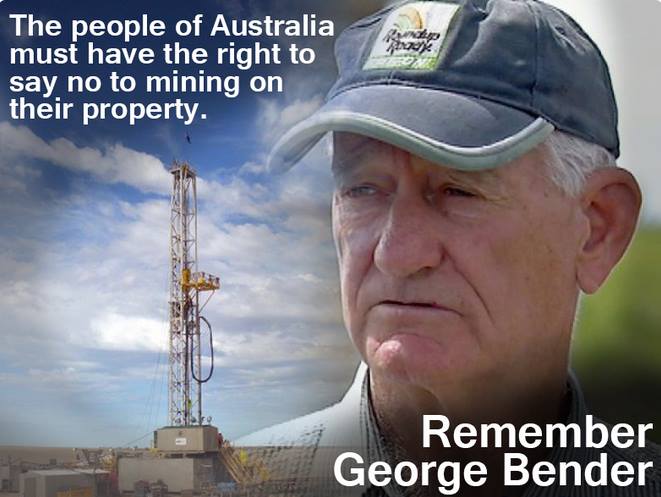
Report illegal dumping
NSW Government
The RIDonline website lets you report the types of waste being dumped and its GPS location. Photos of the waste can also be added to the report.
The Environment Protection Authority (EPA), councils and Regional Illegal Dumping (RID) squads will use this information to investigate and, if appropriate, issue a fine or clean-up notice.
Penalties for illegal dumping can be up to $15,000 and potential jail time for anybody caught illegally dumping within five years of a prior illegal dumping conviction.
This is the first time RIDonline has been opened to the public. Since September last year, the EPA, councils, RID squads and public land managers have used it to report more than 20,000 tonnes of illegally dumped waste across more than 70 local government areas.
The NSW Government has allocated $58 million over five years to tackle illegal dumping as part of its $465.7 million Waste Less Recycle More initiative. NSW Premier Mike Baird has also committed to reducing the volume of litter by 40%, by 2020 to help keep NSW's environment clean.
- clear 37.8 hectares of vegetation to expand the existing extraction area
- rehabilitate the quarry site progressively, and after extraction is completed
- extract up to 1.5 million tonnes of hard rock material per year
- increase the hours of operation
- transport processed material to market by road trucks and trains
- construct a new access driveway and bridge.
- Department of Planning and Environment: Information Centre, Level 22, 320 Pitt Street, Sydney
- Dungog Shire Council: Council Administration Office,198 Dowling St, Dungog
- Maitland City Council: 285-287 High Street, Maitland
- Nature Conservation Council: 14/338 Pitt Street, Sydney.
Bushcare in Pittwater
Where we work Which day What time
Avalon
Angophora Reserve 3rd Sunday 8:30 - 11:30am
Avalon Dunes 1st Sunday 8:30 - 11:30am
Avalon Golf Course 2nd Wednesday 3 - 5:30pm
Careel Creek 4th Saturday 8:30 - 11:30am
Toongari Reserve 3rd Saturday 9 - 12noon (8 - 11am in summer)
Bangalley Headland 2nd Sunday 9 to 12noon
Bayview
Winnererremy Bay 4th Sunday 9 to 12noon
Bilgola
North Bilgola Beach 3rd Monday 9 - 12noon
Algona Reserve 1st Saturday 9 - 12noon
Plateau Park 1st Friday 8:30 - 11:30am
Church Point
Browns Bay Reserve 1st Tuesday 9 - 12noon
McCarrs Creek Reserve Contact Bushcare Officer To be confirmed
Clareville
Old Wharf Reserve 3rd Saturday 8 - 11am
Elanora
Kundibah Reserve 4th Sunday 8:30 - 11:30am
Mona Vale
Mona Vale Beach Basin 1st Saturday 8 - 11am
Mona Vale Dunes 2nd Saturday+3rd Thursday 8:30 - 11:30am
Newport
Bungan Beach 4th Sunday 9 - 12noon
Crescent Reserve 3rd Sunday 9 - 12noon
North Newport Beach 4th Saturday 8:30 - 11:30am
Porter Reserve 2nd Saturday 8 - 11am
North Narrabeen
Irrawong Reserve 3rd Saturday 2 - 5pm
Palm Beach
North Palm Beach Dunes 3rd Saturday 9 - 12noon
Scotland Island
Catherine Park 2nd Sunday 10 - 12:30pm
Elizabeth Park 1st Saturday 9 - 12noon
Pathilda Reserve 3rd Saturday 9 - 12noon
Warriewood
Warriewood Wetlands 1st Sunday 8:30 - 11:30am
Whale Beach
Norma Park 1st Friday 9 - 12noon
Western Foreshores
Coopers Point, Elvina Bay 2nd Sunday 10 - 1pm
Rocky Point, Elvina Bay 1st Monday 9 - 12noon

Report illegal dumping
NSW Government
The RIDonline website lets you report the types of waste being dumped and its GPS location. Photos of the waste can also be added to the report.
The Environment Protection Authority (EPA), councils and Regional Illegal Dumping (RID) squads will use this information to investigate and, if appropriate, issue a fine or clean-up notice.
Penalties for illegal dumping can be up to $15,000 and potential jail time for anybody caught illegally dumping within five years of a prior illegal dumping conviction.
This is the first time RIDonline has been opened to the public. Since September last year, the EPA, councils, RID squads and public land managers have used it to report more than 20,000 tonnes of illegally dumped waste across more than 70 local government areas.
The NSW Government has allocated $58 million over five years to tackle illegal dumping as part of its $465.7 million Waste Less Recycle More initiative. NSW Premier Mike Baird has also committed to reducing the volume of litter by 40%, by 2020 to help keep NSW's environment clean.
Childhood Cancer Network Receives $20 Million To Help Children With Cancer
ACCC Reports On Changes To Private Health Insurance Policies
Defence Science Contributes To Discovery Of Earlier Human Occupation In Australia
Cutting-Edge Nuclear Techniques Help Prove Australia's Oldest Aboriginal Site
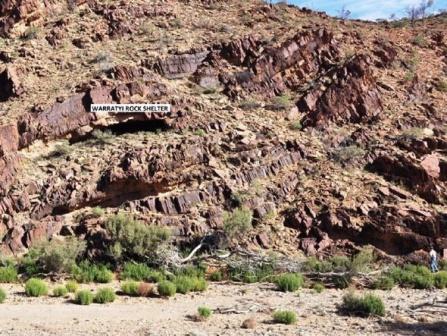
Foundations Poured For New Light Rail Tunnel
ASIC 2015–16 Annual Report Tabled
Common Bronzewing - Male And Female
ACCC Releases Quarterly Report On The NBN Wholesale Market
Open Government National Action Plan
Preserving Our State's Built Heritage
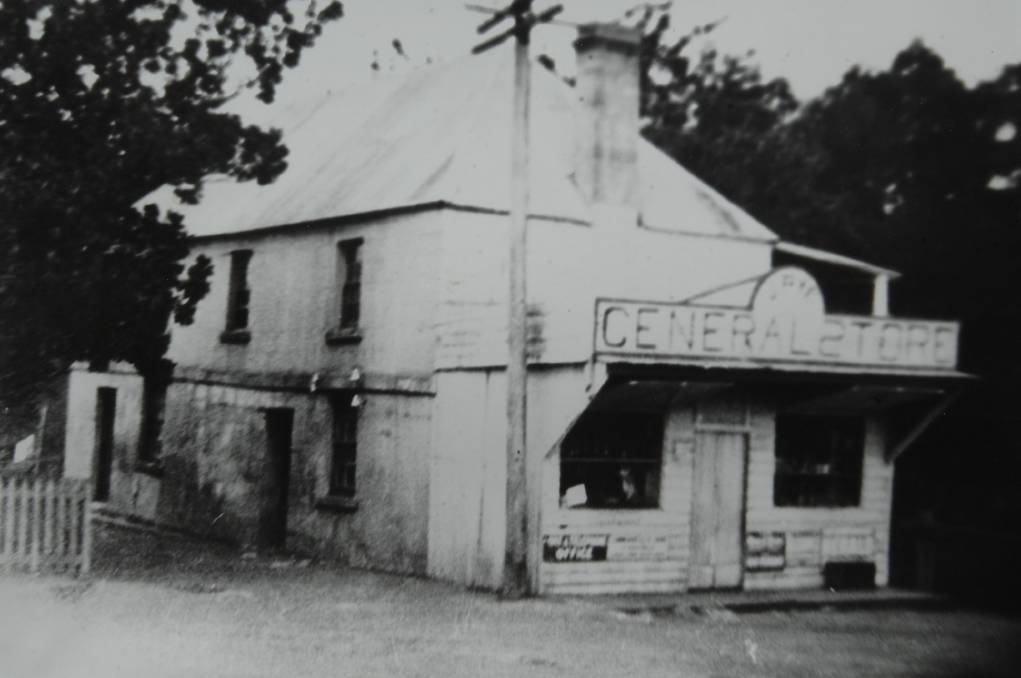
Have Your Say On New Disability Employment Services
Get Prepped For Schoolies’ Week: NSW Health
Apply For The Premier's Anzac Memorial Scholarship
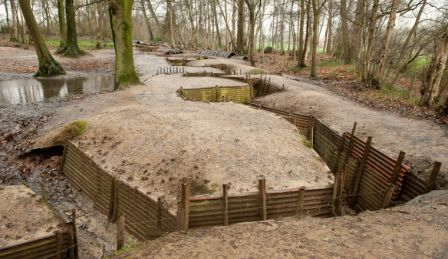
How The Sandwich Was Invented
$234.7 Million For New Research Discoveries
- $376,000 for a project led by Professor Ampalavanapillai Nirmalathas at The University of Melbourne to improve the coverage, mobile access, miniaturisation, bandwidth and networking of optical wireless systems.
- $338,000 for research led by Associate Professor Blake Johnson at Macquarie University to understand how children acquire language by studying speech production in the developing brain, for insights into speech and language problems that affect health and quality of life.
- $187,222 for research led by Dr Kathleen Ellis at Curtin University of Technology to understand how people with a disability use smartphones to navigate the urban environment, for improving access to public space and essential services.
- $117,000 for a project led by Dr Bo Xia at Queensland University of Technology to develop best practice solutions to improve the living environment of retirement villages and the quality of life for ageing Australians.
- $297,500 for a project led by Associate Prof Menna Jones at the University of Tasmania to investigate approaches for suppressing invasive prey and predators that could be scaled up to conserve threatened native wildlife in unfenced landscapes.
Royal Visitors Meet Dutch Migrants At National Archives
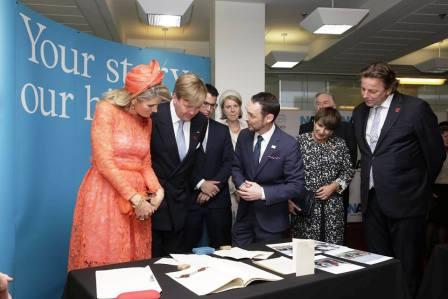
NSW Government Gazette
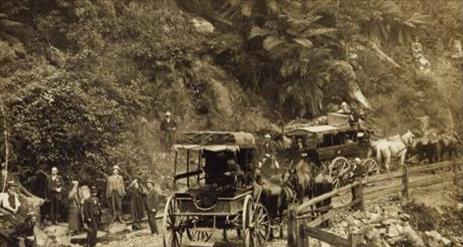
National Museum Of Australia Acquires Historic Riding Breeches
Pets Of All Types Take Over The National Portrait Gallery
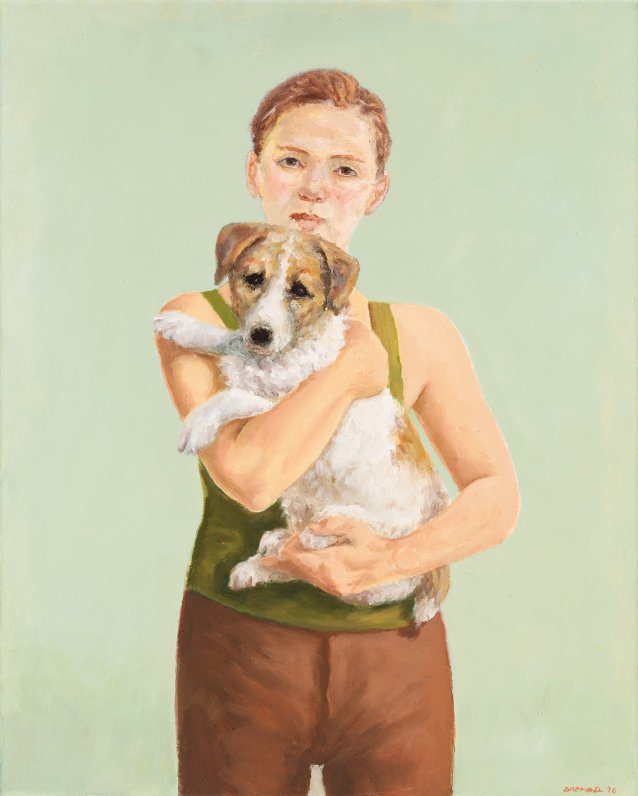 November 3rd, 2016: National Portrait Gallery
November 3rd, 2016: National Portrait GalleryAnniversary Of The Battle Of Beersheba
Disclaimer: These articles are not intended to provide medical advice, diagnosis or treatment. Views expressed here do not necessarily reflect those of Pittwater Online News or its staff.
Study Identifies Molecule That Limits Excessive Expansion Of Heart Muscle Cells
Well-Being Linked With When, How People Manage Emotions
AUSTRAC Signs Historic MoU With China
Have Your Say On A Mixed Use Development At Barangaroo South
